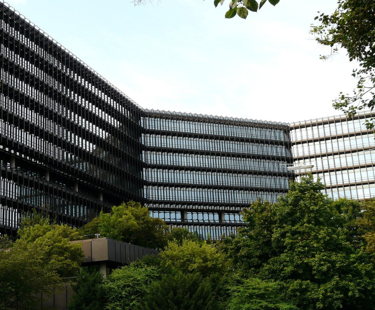On 29th June 2023, the European Patent Office (EPO) reported a new referral to the Enlarged Board of Appeal (EPA) which deals with the issue of what level of disclosure is required when considering whether a complex product can be considered prior art. Particularly, the EBA has been asked to determine whether products that have been on sale prior to the filing date of a patent application are to be considered prior art if its composition or internal structure cannot be analysed and reproduced without undue burden by the person skilled in the art.
The new referral, G1/23 (“solar cell”) is from the Board of Appeal in T0438/19 and asks the following three questions:
- Is a product put on the market before the date of filing of a European patent application to be excluded from the state of the art within the meaning of Article 54(2) EPC for the sole reason that its composition or internal structure could not be analysed and reproduced without undue burden by the skilled person before that date?
- If the answer to question 1 is no, is technical information about said product which was made available to the public before the filing date (e.g. by publication of technical brochure, non-patent or patent literature) state of the art within the meaning of Article 54(2) EPC, irrespective of whether the composition or internal structure of the product could be analysed and reproduced without undue burden by the skilled person before that date?
- If the answer to question 1 is yes or the answer to question 2 is no, which criteria are to be applied in order to determine whether or not the composition or internal structure of the product could be analysed and reproduced without undue burden within the meaning of opinion G 1/92? In particular, is it required that the composition and internal structure of the product be fully analysable and identically reproducible?
Board of Appeal Decision T0438/19 concerns European Patent No. 2626911 (Mitsui Chemicals) and the rejection of an opposition thereto filed by Borealis AG. The patent in question relates to encapsulating material for solar cells which comprise an ethylene/α-olefin copolymer having certain defined characteristics. The Opposition Division concluded that the closest prior art was a product called ENGAGE® 8400 disclosed in an example in document 1 (D1). The Board issued its preliminary opinion that whether the subject matter of claim 1 of the Patent in suit involved an inventive step ultimately depended on whether the (commercially available) product ENGAGE® 8400 had been made available to the public before the effective date of the present patent.
The Patent Proprietor acknowledged that the ENGAGE® 8400 product was commercially available and fulfilled all of the properties of claim 1 apart from the content of aluminium. However, it argued, relying on paragraph 1.4 of G1/93 and decision T23/11, that the ENGAGE® 8400 product had not been made available to the public. The Patent Proprietor stated that reverse engaging a commercial polymer without knowledge of the synthesis conditions, in particular the specific catalysts and reaction conditions would require an extensive research programme, for which success is not guaranteed. This, it was argued, represented an undue burden meaning that the prior art was not enabled and therefore could not constitute prior art.
The Opponent in reply attempted to dismiss the argument that the ENGAGE® 8400 product was insufficiently disclosed and argued that the product need not be reproduced exactly the same for it to be considered prior art.
The Board acknowledged an earlier EBA decision, G1/92 which dealt with the availability to the public of the chemical composition of a product and considered that subsequent Board of Appeal decisions applied the ruling of G1/92 in a divergent manner. Particularly, there is divergent case law relating to (i) the interpretation of “available to the public”; (ii) the degree of detail required for analysis of products; and (iii) the requirements for reproducibility.
Consequently, the Board of T0438/19 felt it necessary to refer the above-referenced questions to the Enlarged Board of Appeal.
If you would like further details about the issues involved in this referral, please get in touch with your Secerna contact or email us at docketing@secerna.com

